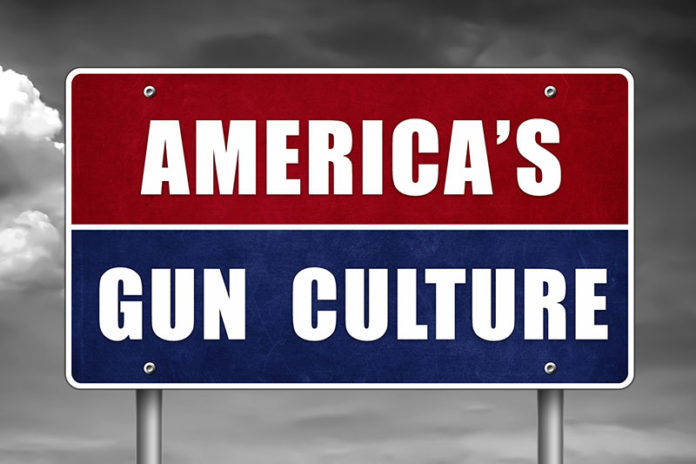In the mid-1970s the NRA had to make a choice. As crime continued to spike across the nation, and politicians increasingly embraced gun control measures, an internal debate broke out about the future of the organization.
Initially, the NRA’s more passionate Second Amendment advocates were purged. NRA leadership would fire more than 70 activists during the early part of the decade. By 1976, the organization’s board decided to relocate its headquarters from Washington, D.C., to Colorado to extract itself from political debate. It wasn’t until a 1977 NRA convention in Cincinnati that politically minded members pulled off something of a coup, wresting the organization from the nonpolitical wing.
Many of today’s gun control advocates like to claim the “Cincinnati revolt” was the moment extremists took over the organization, undermining average gun owners who were merely interested in hunting and skeet shooting — which is, needless to say, a simplistic understanding of both the NRA’s history and gun owners. The gun control debate had changed, and the NRA changed with it. And the more gun controllers pushed, the more popular the NRA became, doubling its membership from 1977 to 1983. With every concerted effort to enact gun restrictions, the organization grew.
What is the point of the NRA now? Is it to be one of the thousand partisan outfits in D.C. helping elect Republicans, or is it to make compelling and effective arguments about the virtues and necessity of the Second Amendment? For someone looking in from the outside, it seems the past few years have been mostly about the former.
Of course, we shouldn’t forget the NRA runs an array of programs around the country that cultivate responsible gun owners. And it isn’t the group’s fault, as a policy matter, that firearms have become predominately a partisan issue. Young voters might not be aware that the NRA once regularly supported pro-gun Democrats such as Harry Reid and Bernie Sanders. It’s the left’s embrace of confiscatory policies and intrusions that often makes bipartisan support untenable. The NRA is compelled to back Republicans because Republicans — and the judges they nominate and confirm — are far more prone to protect gun rights.
The problem with being a partisan outfit, however, is that you soon start working for the party, rather than asking the party to help you. After the Las Vegas mass shooting that killed 58 people, the deadliest in U.S. history, the Trump administration unilaterally banned bump stocks through executive action.
You can imagine that had the Obama administration engaged in a precedent-setting intrusion into gun rights, banning an accessory by fiat rather than legislatively, the NRA would rightly have raised hell about the dictatorial powers of the presidency. In this case, the best pushback the organization could muster was that it was “disappointed.”
Today, Republicans talk about universal background checks and “red flag” laws that could strip gun owners of their due process rights, and the NRA isn’t offering persuasive arguments about why they’re bad ideas. Are they even part of the conversation in any meaningful way? It’s difficult to tell. These days, the NRA, it seems, is just a convenient punching bag for Democrats who are too cowardly to go after tens of millions of gun owners.
Another problem with being aggressively partisan is that the NRA turns off millions of Americans who might be open to its cause but aren’t politically involved. In the past few years, the NRA leadership handed the keys (and a ton of cash) to the PR firm Ackerman McQueen, which in turn, seemed to believe the NRA should be another Fox News rather than a civil rights organization. Now the two are mired in countersuits.
Should the NRA strive to involve itself in every contemporary debate, creating antagonism on issues that have absolutely nothing to do with gun rights? Though I’m no public relations expert, it seems to me that the mission of any issue-oriented organization should be to proselytize rather than alienate.
On top of all of this, a nasty and convoluted internal fight has broken out among the board members and NRA head Wayne LaPierre, none of which has anything to do with the future of gun rights, but rather personal animosity and greed.
It’s unlikely that most members are very interested in the disputed specifics of the kerfuffle, but it all spilled into public view when then-president Oliver North alleged that the NRA was spending nearly $100,000 a day on lawyers. The NRA’s top lobbyist, Christopher Cox, would also resign after being accused of plotting to push out LaPierre. Apparently, the NRA head had spent about $540,000 on clothing and travel expenses that had been laundered through Ackerman.
This week, we learned via The Wall Street Journal that the NRA had signed a document agreeing to purchase 99% of a company that was formed for the sole purpose of buying LaPierre a $6 million mansion in Dallas. For whatever reason, the deal was never consummated.
Why should any gun owner or Second Amendment advocate send money to an organization that is increasingly ineffective on policy, though highly effective at keeping a few people rich? Perhaps longtime members keep re-upping with the NRA, but how many younger Americans are becoming members? If the NRA wants to be as powerful as Democrats claim it is, it’s going to have to change again.































